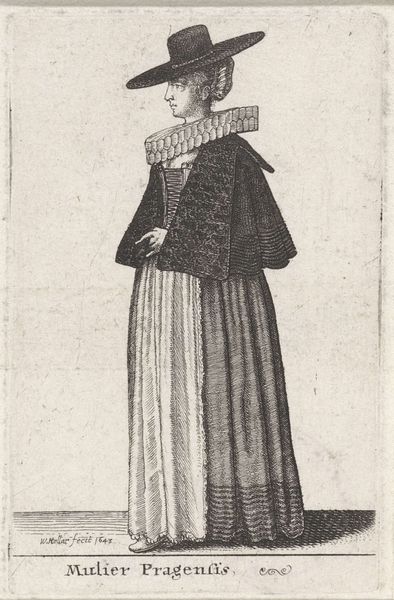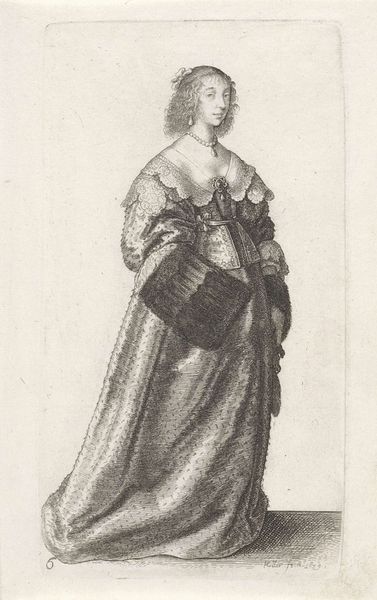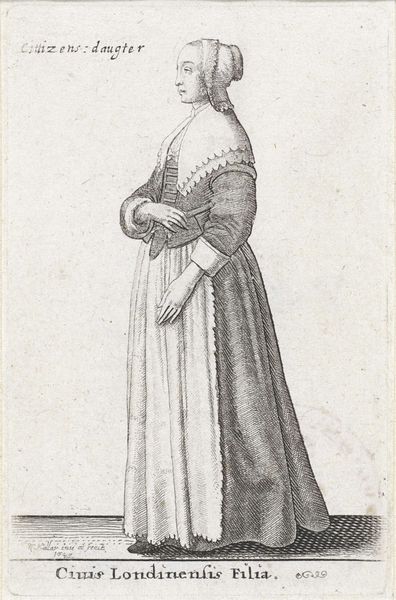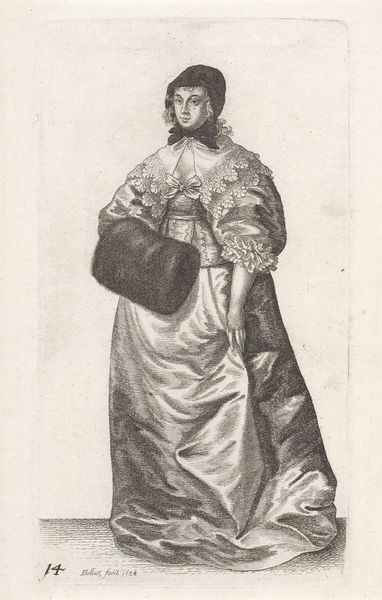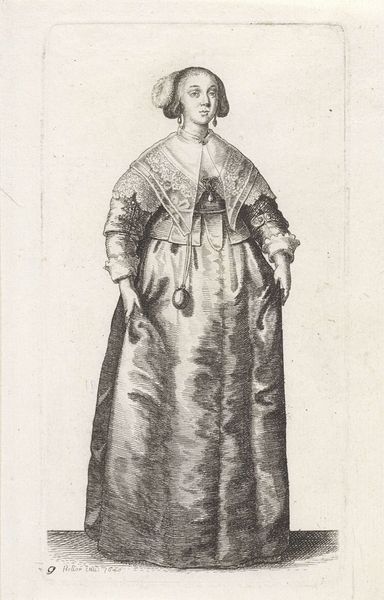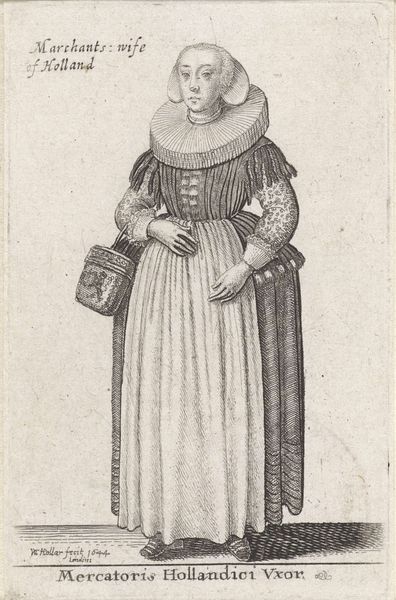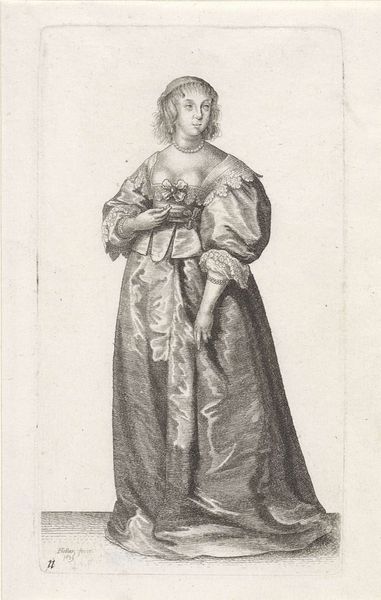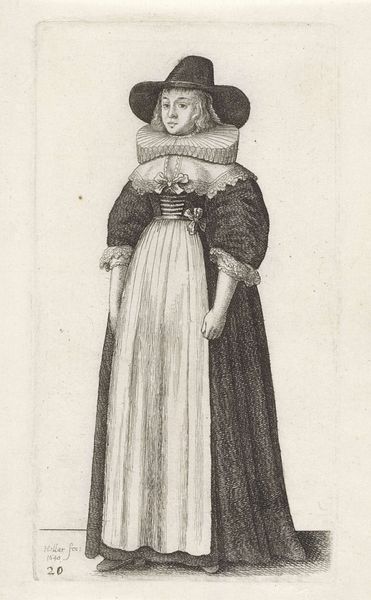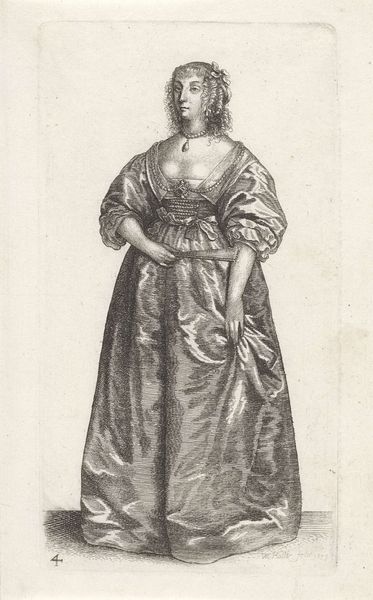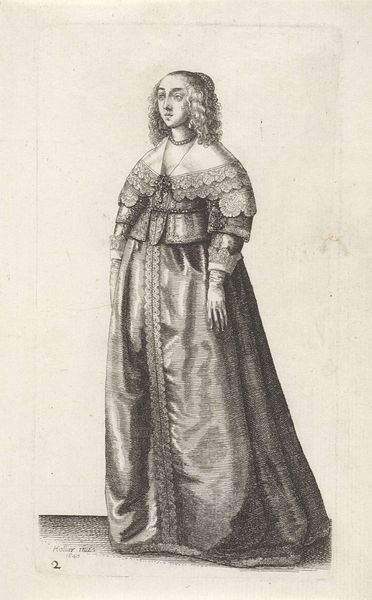
Ornatus Muliebris Anglicanus (The Clothing of English Women) 1640
0:00
0:00
wenceslaushollar
Rijksmuseum
print, engraving
#
portrait
#
baroque
# print
#
genre-painting
#
history-painting
#
dress
#
engraving
Dimensions: height 134 mm, width 72 mm
Copyright: Rijks Museum: Open Domain
Wenceslaus Hollar created this engraving, Ornatus Muliebris Anglicanus, in 1640s England. The woman’s attire speaks volumes about her status and the cultural values of the time, but it is her gesture—hands clasped gently at her waist—that captivates. This subtle clasp echoes across centuries. We see similar gestures in ancient Roman portraiture, where it signified modesty and virtue. Consider how Renaissance painters like Raphael employed it to imbue their female figures with grace and humility. This gesture, however, is never fixed. It evolves, transforming from a symbol of virtue to one of quiet contemplation or even suppressed desire. What is the emotional weight of this recurring motif? Perhaps it taps into a collective memory, a subconscious recognition of shared human experiences. It represents restraint, decorum, and the complex interplay between inner thoughts and outward presentation, engaging viewers on a deep, subconscious level. Like a returning spirit, this gesture reappears, its meaning reshaped by the ever-changing currents of history.
Comments
rijksmuseum over 2 years ago
⋮
The diversity of women’s apparel in England is illustrated in this extensive costume series. Hollar represented women from all ranks of society, from the humble countrywoman 1 to the elegant noblewoman 2. The more fashionable costumes are based on eyewitness observation of the ladies at the court of the Earl of Arundel, Hollar’s primary patron. They are therefore among the more reliable visual sources for costume historians.
Join the conversation
Join millions of artists and users on Artera today and experience the ultimate creative platform.

